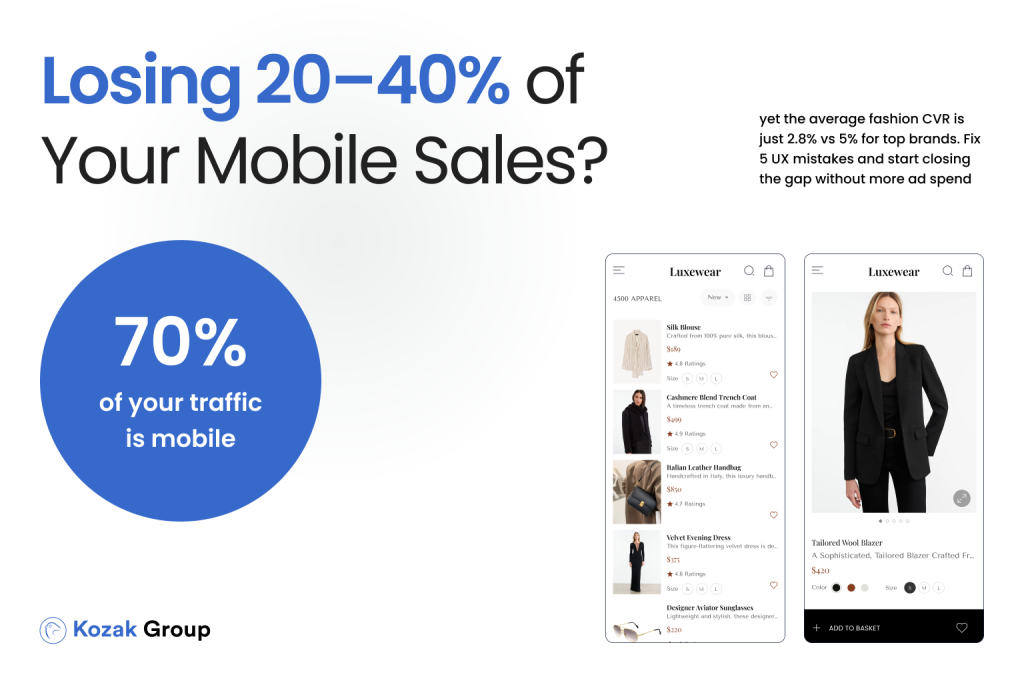Cart abandonment statistics are critical for understanding why online shoppers leave without buying. This article dives into key statistics, reasons behind abandonment, and effective strategies to reduce it.
Key Takeaways
- Shopping cart abandonment results in global eCommerce retailers losing approximately 10% of annual sales revenue, amounting to about $4 trillion.
- Key reasons for cart abandonment include unexpected costs (55%), complex checkout processes, and concerns regarding payment security, which can lead retailers to lose potential sales.
- Implementing strategies like guest checkout options and retargeting ads can significantly reduce cart abandonment rates and improve overall eCommerce conversion rates.
What is Cart Abandonment?
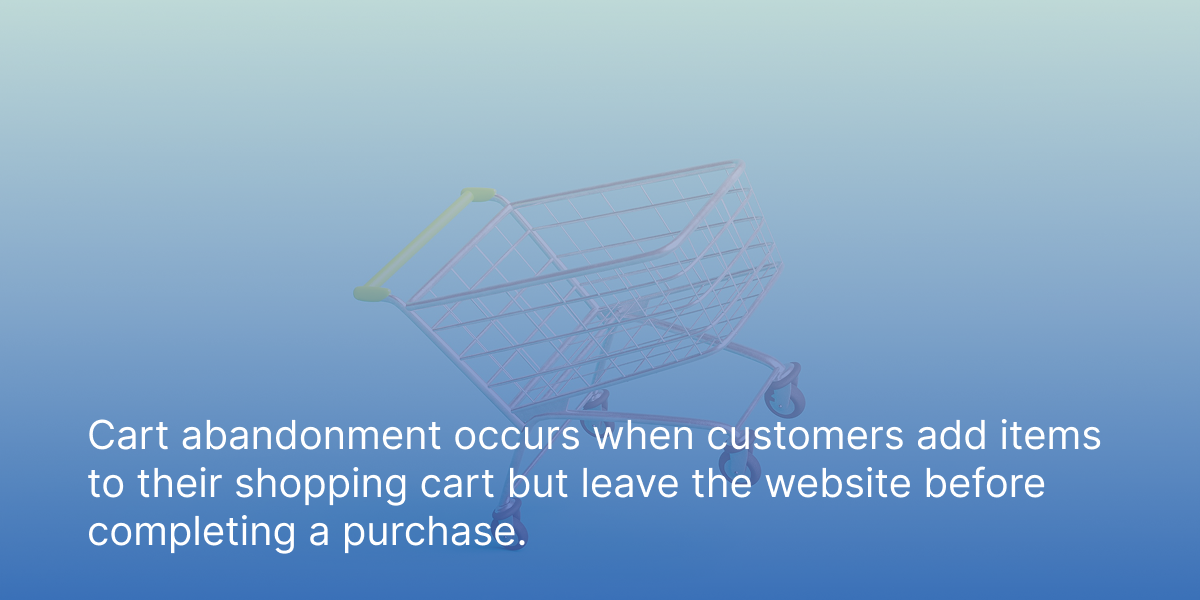
The Shopping Cart Abandonment Rate is calculated based on the number of shopping carts created versus the number of completed purchases.
An elevated abandonment rate usually indicates problems with the user experience or deficiencies in the sales funnel. To diminish cart abandonment and boost sales revenue, it is imperative for retailers to refine their checkout process.
The Impact of Shopping Cart Abandonment on Ecommerce Businesses

When cart abandonment rates are high, the cost per completed sale rises since companies must allocate additional resources toward marketing efforts aimed at recapturing potential customers and recovering missed sales opportunities. Abandoned carts result in significant lost sales, highlighting the importance of addressing this issue to recover potential revenue. Overlooking such abandonment rates may lead to lackluster performance in sales and result in flawed strategic decisions that could stall business growth and inhibit overall success.
Nevertheless, there is substantial room for retailers to reclaim up to $260 billion worth of transactions from abandoned shopping carts by refining the checkout process. It underscores an immense opportunity for elevating ecommerce revenues and augmenting profit margins through proactive management and resolution of issues associated with cart abandonment.
Key Reasons Why Shoppers Abandon Carts
Unexpected costs, particularly shipping fees, which are responsible for 48% of cart abandonments, stand as a primary cause for shoppers leaving their carts behind. Extra costs, such as shipping fees and taxes, significantly contribute to cart abandonment. The presence of an extended and intricate checkout process also plays a considerable role in discouraging customers from finalizing their purchases. The necessity to create an account can dissuade potential buyers from proceeding.
Aggressive upselling strategies, insufficient shipping alternatives, and protracted delivery times can adversely influence a customer’s willingness to proceed with a purchase. Not providing enough payment methods can lead to cart abandonment. Cart abandonment rates escalate due to technical issues like website failures or the unavailability of preferred payment options as well.
Customers frequently search for discount codes before finishing their orders. Lacking these incentives may lead them to abandon their carts. Engaging Shopping – inspecting items and gauging prices at competing online stores while essentially window shopping – serves as yet another factor driving customers away from completing transactions on certain sites. A complex checkout process can deter customers from completing their purchases.
Global Cart Abandonment Statistics
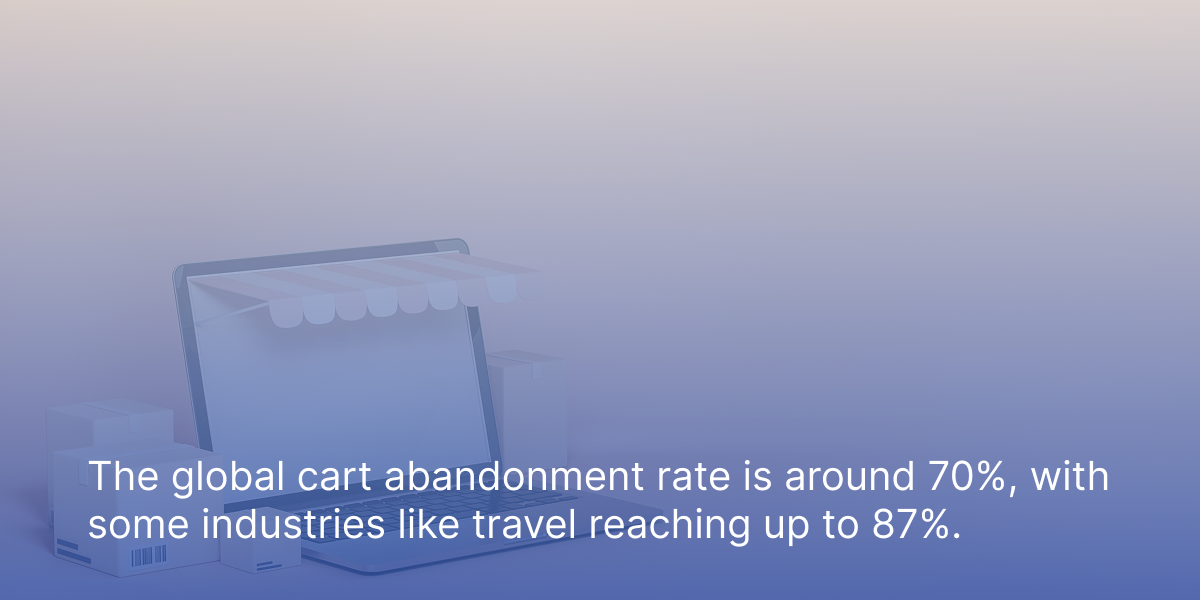
The prevalence of incomplete transactions also varies significantly across different sectors according to recent shopping cart abandonment statistics.
- High-end goods like luxury items and jewelry face an alarming rate exceeding 81%.
- A remarkable number close to 87% is evident in the travel sector’s baskets without purchases.
- Meanwhile, telecommunications companies grapple with an average abandoning rate situated at about 79.16%.
Intriguingly enough, there appears to be a downward adjustment in these rates towards each month’s conclusion when less shoppers abandon their carts. Visitors from social networks contribute dramatically to this pattern. E-commerce enterprises notice up to a whopping 91% non-completion rate among consumers originating from those platforms – underlining yet another layer of complexity regarding converting traffic into sales during online shopping sprees.
Device-Specific Cart Abandonment Rates
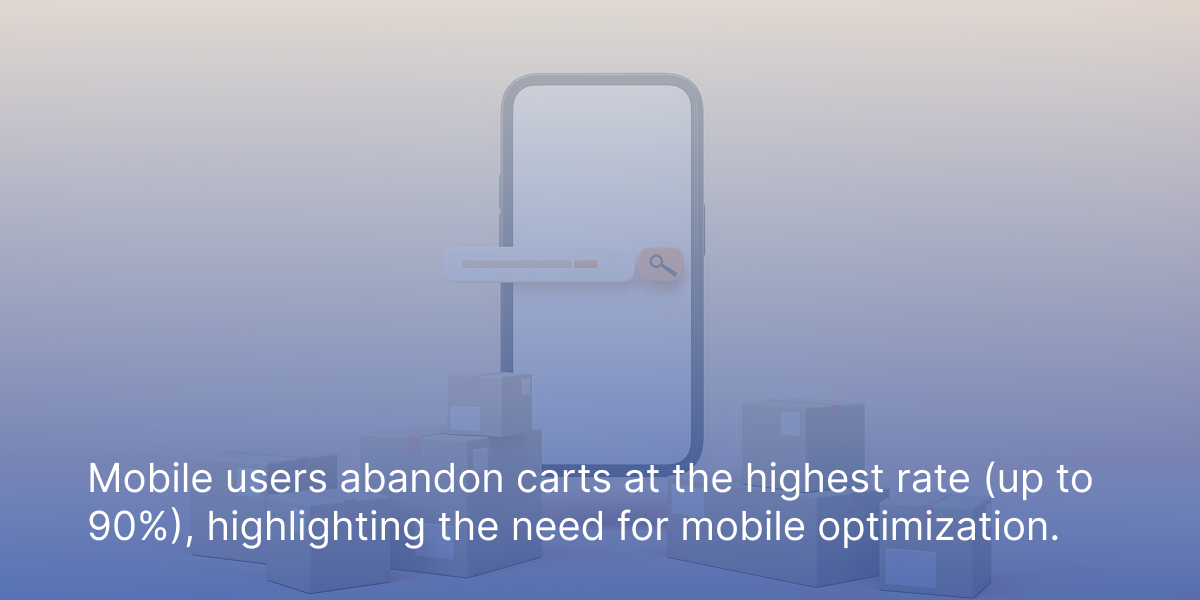
The data accentuates the urgency in delivering an uninterrupted and efficient shopping experience across various devices by prioritizing factors like site speed. Especially noteworthy is that individuals utilizing mobile devices display greater tendencies toward abandoning carts than those on desktops or tablets, underscoring how crucial it is for online retailers to improve upon these figures through meticulous optimization targeted at mobile users’ needs.
Regional Cart Abandonment Trends
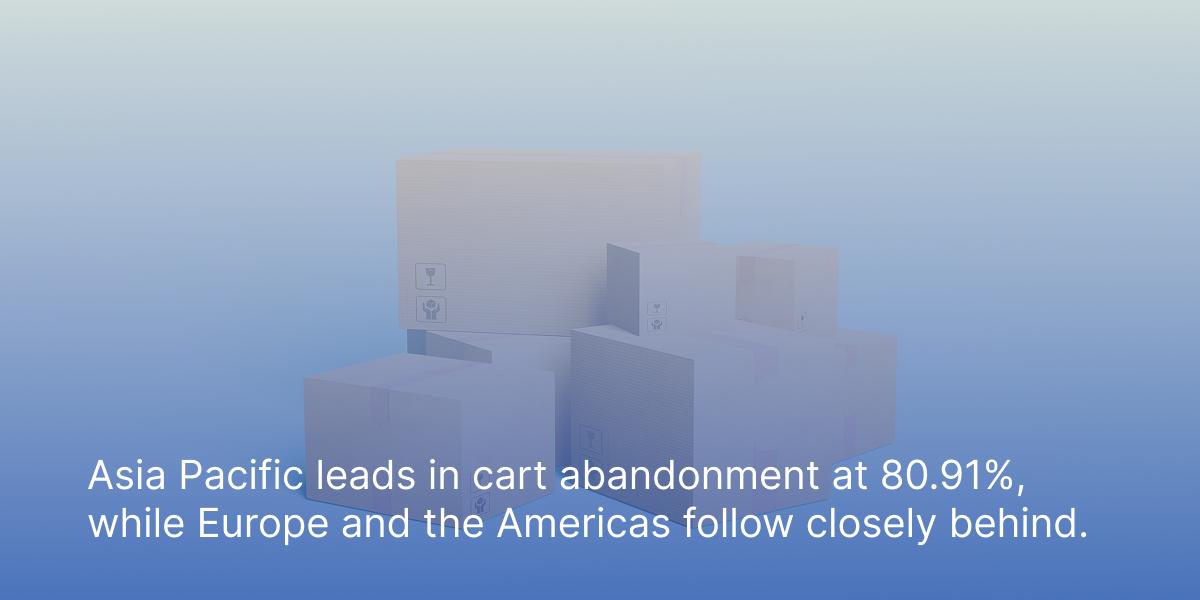
For online retailers, understanding these regional trends is crucial when optimizing their checkout processes. For instance, regions with higher abandonment rates might benefit from offering more localized payment options or transparent shipping costs. By tailoring strategies to specific markets, ecommerce businesses can effectively reduce cart abandonment rates and enhance the overall shopping experience for their customers.
Recognizing and adapting to regional cart abandonment trends allows ecommerce businesses to create more targeted and effective strategies, ultimately leading to higher conversion rates and increased sales revenue.
Demographic Trends in Cart Abandonment
Cart abandonment rates also vary significantly across different age groups. Shoppers between the ages of 25-34 exhibit the highest abandonment rate at 21%, followed closely by the 35-44 age group at 20%. Meanwhile, the 45-54 age group shows a lower abandonment rate of 13%. These demographic trends can be influenced by factors such as income level, education, and online shopping experience.
Online retailers should consider these demographic trends when designing their checkout processes and marketing strategies. For example, younger shoppers might prioritize speed and convenience, making features like one-click checkout and mobile optimization crucial. On the other hand, older shoppers might value detailed product information and secure payment options.
By understanding and addressing the specific needs and preferences of different age groups, ecommerce businesses can create targeted campaigns that reduce cart abandonment rates and improve the overall shopping experience.
High Shipping Costs and Their Effect on Cart Abandonment

To access complimentary shipping options, nearly half (48%) of buyers will place more products in their baskets. Yet, the lack of visibility regarding total purchase cost early on causes about one-quarter (23%) of customers to leave behind their carts. The presence of steep shipping rates can significantly influence consumer contentment and the probability that they will finalize a transaction.
Employing strategies such as establishing minimum spend thresholds for free shipment offers might alleviate concerns related to high dispatch fees and incentivize larger orders among patrons. This approach serves as an effective method to address customer hesitation tied to hefty transportation expenses which frequently hinders them from proceeding with their online purchases.
The Role of Payment Security Concerns in Cart Abandonment
Due to concerns over payment security, one in four customers decide not to proceed with their purchases. Newcomers to a site are especially prone to such trust issues and are thus more inclined not to finalize their transactions than individuals who have shopped on the site before. Concerns about sharing credit card details can lead to cart abandonment. If an eCommerce website appears insecure, it increases the probability that visitors will abandon their carts.
By conducting consistent security checks and showcasing symbols of trustworthiness, e-commerce platforms can bolster consumer confidence. Effective strategies like highlighting secure methods of payment and featuring safety certifications play a crucial role in diminishing abandonment rates caused by apprehensions about security, thereby providing assurance to potential buyers.
The Influence of Checkout Process Length on Cart Abandonment
A convoluted or extended checkout process is responsible for the abandonment of 17% of shopping carts. The average checkout flow typically contains around 23.48 form elements, and a lengthy process can contribute to cart abandonment. By streamlining this experience, it’s possible to cut down on these abandonment rates by as much as 35%. The adoption of a one-page checkout system has demonstrated a reduction in cart abandonment by nearly 21,8%.
The propensity for customers to abandon their online purchases increases when faced with an unintuitive sequence within the checkout flow and demands for excessive details. An ideal checkout flow is smooth and frictionless, minimizing unnecessary information requests. To improve user satisfaction and decrease cart abandonment levels, optimizing the orderliness and simplicity of the checkout process is advised—this strategy aims at achieving not only an average but also a superior checkout flow overall.
The Effectiveness of Guest Checkout Options
Incorporating a guest checkout option for customers has been shown to result in a notable 41% reduction in online shopping cart abandonment. By simplifying the purchasing process with this feature, it enables customers to finalize their transactions more quickly.
Consumers frequently anticipate prompt interactions while dealing with online retailers, and this expectation can affect whether they follow through on their purchases. Presenting the choice of guest checkout enhances the overall user experience and diminishes the chances that shoppers will abandon their shopping carts during an online purchase.
The Power of Retargeting Ads in Recovering Abandoned Carts

These ads play a crucial role in addressing abandoned shopping carts by bringing those uncompleted purchases back into the customer’s focus. Consequently, this approach is instrumental in enhancing ecommerce sales and spotlighting the issue of lost revenue for businesses.
Email Campaigns for Cart Recovery
Email initiatives are crucial for coaxing customers to finalize their purchases and mitigating cart abandonment. They boast an impressive open rate exceeding 40%, with the average click-through rate reaching approximately 21%.
Tailored email sequences, featuring diverse incentives, are particularly effective in reclaiming abandoned carts. These emails often showcase the forgotten items within a customer’s cart, tapping into emotional triggers and subsequently boosting conversion rates.
Psychological Factors Behind Cart Abandonment
A site that is difficult to navigate or suffers from slow loading times can undermine the trust of shoppers, leading to an increase in cart abandonment. The notion of social proof indicates that buyer behavior is heavily influenced by observing the actions of others, and this can play a significant role. Using trust symbols can reassure shoppers about the safety of their personal information. Implementing a generous return policy may foster confidence in consumers and lead to lower rates of cart abandonment.
Incorporating user-generated content like reviews and images from customers can cultivate trustworthiness, which has the potential to decrease instances where carts are abandoned. Understanding purchase intent is crucial for optimizing conversion funnels and reducing cart abandonment. It’s vital for retailers to grasp these psychological aspects as they are key in tackling the underlying reasons for cart abandonment and enhancing buyers’ overall experience with online shopping.
Industry Benchmarks for Cart Abandonment
The average cart abandonment rate across all industries stands at 70.19%, according to the Baymard Institute. However, this rate can vary significantly depending on the industry. For instance, the fashion industry experiences a high cart abandonment rate of 84%, while the travel industry faces an even higher rate of 87%.
These industry benchmarks provide valuable insights for online retailers, helping them evaluate their performance and identify areas for improvement. By comparing their cart abandonment rates to industry standards, ecommerce businesses can pinpoint specific issues within their checkout processes and develop targeted strategies to address them.
Understanding industry benchmarks for cart abandonment is essential for online retailers aiming to reduce abandonment rates and increase conversions. By continuously monitoring and optimizing their performance, ecommerce businesses can stay competitive and enhance their overall sales revenue.
Cart Abandonments and Revenue Impact
Cart abandonments result in significant revenue losses for ecommerce businesses, with an estimated $260 billion in recoverable sales revenue lost annually. This staggering figure highlights the critical impact of cart abandonment on a company’s bottom line. Each abandoned cart represents a potential loss of sales, making it imperative for online retailers to address this issue proactively.
The average large-sized ecommerce site can achieve a 35.26% increase in conversion rate through better checkout design, leading to substantial revenue gains. By prioritizing the reduction of cart abandonment rates, online retailers can minimize revenue losses and boost their overall conversions.
Understanding the revenue impact of cart abandonment allows ecommerce businesses to allocate resources effectively, optimizing their checkout processes and reducing abandonment rates. By focusing on improving the customer experience and addressing common pain points, online retailers can transform potential losses into finalized purchases, ultimately enhancing their sales revenue and growth.
Best Practices to Reduce Shopping Cart Abandonment
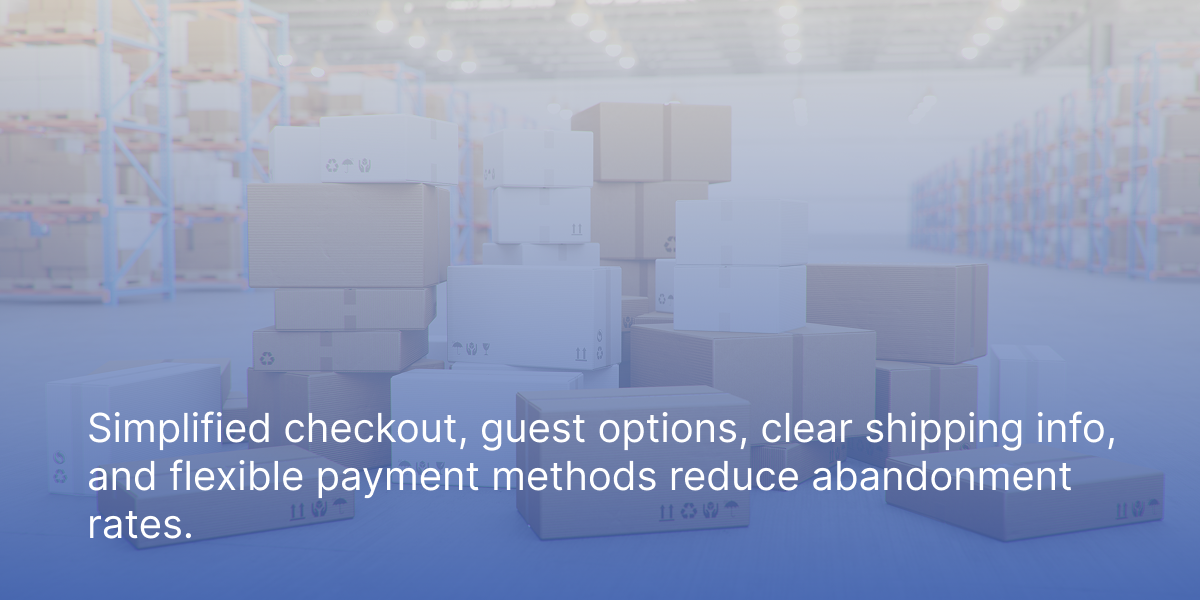
Presenting an array of correct payment methods that customers find appealing is vital in accommodating their diverse preferences, which in turn increases the probability that they will finalize their purchases. Providing the right payment methods is crucial for accommodating diverse customer preferences. A clear breakdown of shipping costs along with explicit communication regarding expenses and expected delivery times can dispel any doubts that might contribute to cart abandonment. Implementing discounts and promo codes serves as effective enticements for shoppers by presenting sufficient payment methods.
Incorporating consumer feedback and ratings bolsters confidence among tentative buyers, propelling them towards completing their online orders. It’s imperative for eCommerce businesses to minimize cart abandonment as part of enhancing conversion rates and optimizing overall revenue generation potential. A better checkout flow can significantly improve conversion rates and reduce cart abandonment.
Case Studies: Successful Cart Abandonment Reduction Strategies

Motivating users to preserve their shopping carts could aid in maintaining prospective purchasers since numerous individuals participate in window-shopping prior to solidifying their intent to buy. Providing options for product customization can nurture an attachment with the merchandise, thereby diminishing the likelihood that shoppers will leave their carts incomplete.
Successful strategies can lead to a higher number of completed purchases. It’s essential for online retail success to minimize cart abandonment. Thus highlighting the importance of deploying efficient tactics in this area.
Summary
In essence, the phenomenon of shopping cart abandonment presents a critical hurdle for eCommerce operations, leading to considerable annual revenue losses. Ecommerce businesses can effectively counter this by examining the primary causes of abandoned carts and drawing insights from worldwide data. Enhancing the checkout experience, providing options for guest checkouts, and using retargeting advertising are powerful tactics to diminish abandonment rates.
To boost eCommerce sales and elevate customer satisfaction substantially, it is crucial to adopt industry best practices and gain wisdom from successful examples in the field. As part of refining your online selling approach, it’s important to recognize that each abandoned cart offers a chance not only for self-improvement but also for transforming potential deals into finalized purchases.
Frequently Asked Questions
How successful are abandoned cart emails?
Emails targeting abandoned carts have proven to be very effective, recapturing about 3.33% of sales that would otherwise be lost and bringing in an average of $3.65 in revenue for each person they’re sent to.
By adopting this approach, you can notably increase the revenue from your ecommerce operations.
What is shopping cart abandonment?
When a customer starts the checkout process but does not finalize their purchase, leaving items in their cart, this is known as shopping cart abandonment.
This phenomenon can significantly affect the revenue of online retailers.
How does cart abandonment affect eCommerce businesses?
Cart abandonment is a major detriment to eCommerce businesses as it not only leads to lost revenue but also increases advertising costs, and adversely affects customer relationships along with the efficiency of business operations.
Tackling this problem is vital for enhancing the overall performance of a business.
What are the main reasons why shoppers abandon their carts?
Shoppers often abandon their carts due to unexpected costs, complicated checkout processes, mandatory account creation, technical issues, and not having preferred payment methods available.
Addressing these factors can significantly improve conversion rates.
How can businesses reduce cart abandonment rates?
Businesses aiming to lower the incidence of cart abandonment can achieve this by simplifying the checkout procedure, allowing for guest checkout, providing a diverse array of payment methods, and utilizing retargeting advertisements along with email campaigns.
By adopting these tactics, companies can improve the overall shopping journey and promote the finalization of transactions.



